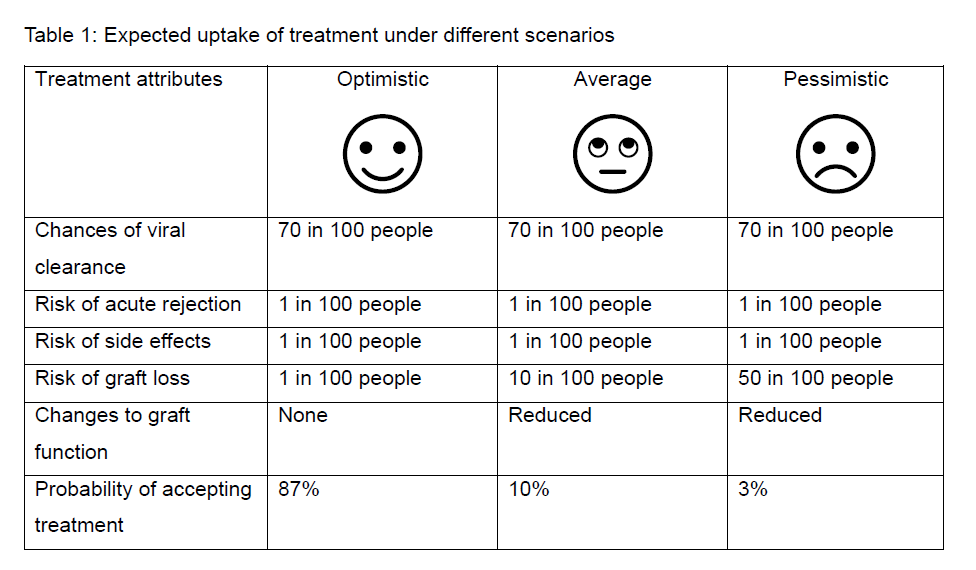Preferences for the treatment of polyomavirus (BKPyV) infection in kidney transplant recipients: A discrete choice experiment with patients, caregivers and clinicians
Chanel Chong1,2, Germaine Wong1,2,3, Eric H. Au1,4,5,6, Nicole Scholes-Robertson1,2, Shyamsundar Muthuramalingam7, Simon D. Roger8, Karen Keung9, Allison Jaure1,2, Armando Teixeira-Pinto1,2, Martin Howell1,2,10.
1School of Public Health, The University of Sydney, Sydney, Australia; 2Centre for Kidney Research, The Children's Hospital at Westmead, Sydney, Australia; 3Centre for Transplant and Renal Research, Westmead Hospital, Sydney, Australia; 4The Alfred Hospital, Melbourne, Australia; 5Australia and New Zealand Dialysis and Transplant Registry, South Australian Health and Medical Research Institute, Adelaide, Australia; 6School of Population & Global Health, University of Melbourne, Melbourne, Australia; 7Central Adelaide Local Health Network, SA Health, Adelaide, Australia; 8Renal Research, Gosford, Australia; 9Prince of Wales Hospital, Sydney, Australia; 10Menzies Centre for Health Policy and Economics, University of Sydney, Sydney, Australia
Background: Treatment strategies for BK polyomavirus (BKPyV) infection in kidney transplant recipients are heterogenous among clinicians. We aimed to identify the treatment preferences of patients, caregivers and health professionals for BKPyV infection and measure the trade-offs between treatment outcomes.
Methods: Adult kidney transplant recipients aged 18 years and over, caregivers and healthcare professionals in Australia and New Zealand were eligible to participate in a discrete choice experiment between February 2021 and June 2022. The five treatment-related attributes were achieving viral clearance and optimal graft function, as well as reducing the risk of graft loss, acute rejection and adverse effects. Results were analyzed using multinomial logistic models.
Results: In total, 109 participants (57 kidney transplant recipients, 10 caregivers and 42 health professionals) were included. Among all participants, the most important treatment attribute was the risk of graft loss at 12 months, followed by the risk of side effects and acute rejection. The chances of viral clearance and the risk of 20% reduction in graft function at 12 months did not have a significant influence on treatment preferences. As the risk of graft loss increased, all participants were less inclined to accept an assigned treatment strategy. For example, if the risk of graft loss was increased from 1% to 50%, the probability of uptake of a treatment strategy for BKPyV infection reduced from 87% to 3%.
Conclusion: Graft loss is the predominant concern for patients, caregivers and health professionals on the decision for the treatment of BKPyV infection.


[1] BK Polyomavirus
[2] Kidney transplant
[3] discrete choice experiment
[4] Preference
